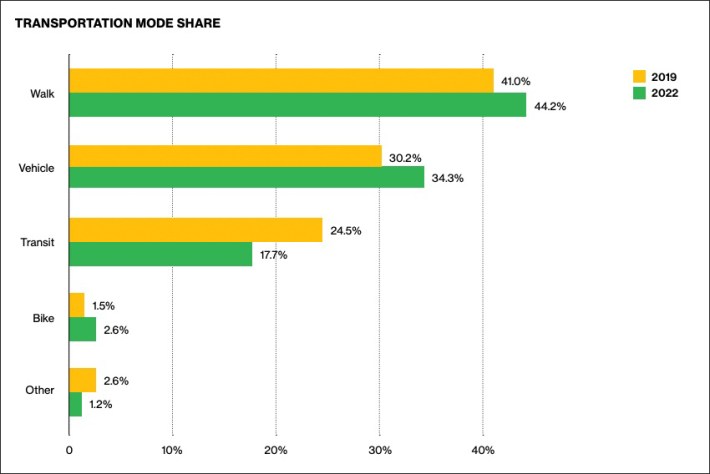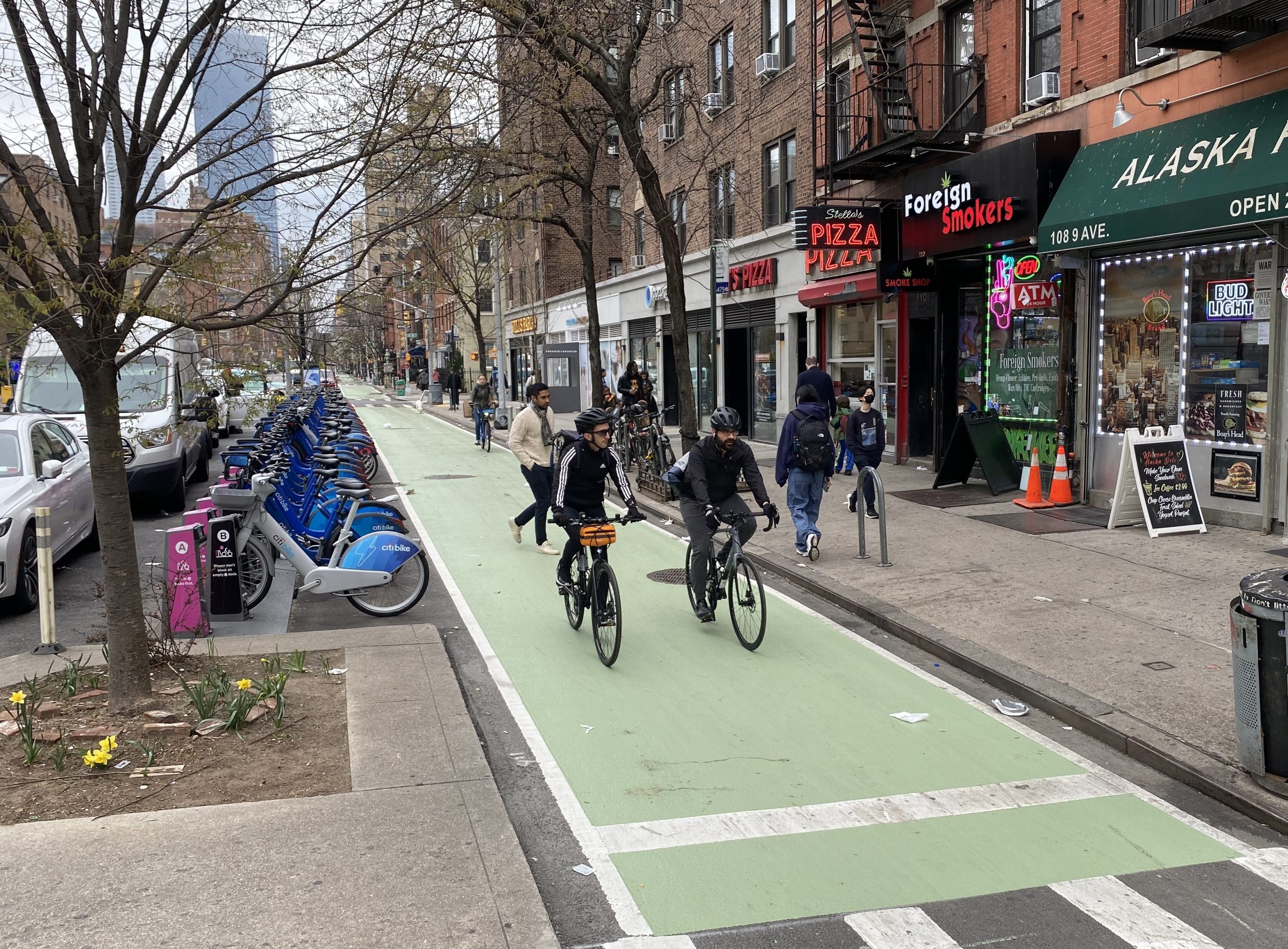The Adams Administration wants to reverse the pandemic era trend of New Yorkers abandoning transit for private cars, according to lofty new goals outlined in a new sustainability report released Thursday in which officials pledged to combat a troubling boom in emission-spewing autos plaguing America's transit capital.
The 92-page document, PlaNYC: Getting Sustainability Done, sets a target date more than 20 years into the future to hit a "sustainable transportation mode share" of 80 percent by 2050 — days after Streetsblog contributor Charles Komanoff reported that the number of cars in the city exploded more than 12 percent between 2012 and 2021, bringing the "car population" up from 1,853,000 to 2,077,000.
To get it done, the city will expand its network of protected bike and bus lanes, grow its dockless e-scooter and e-bike share systems, finally implement congestion pricing, and create thousands of new bike "secure" parking beginning in 2025, according to the new blueprint.
“To combat the present and future challenges of climate change, New Yorkers must continue to adopt safe, sustainable, and efficient transportation,” Transportation Commissioner Ydanis Rodriguez said in a statement.
“A network of secure bike parking facilities will continue encouraging the historic growth in cycling we’ve seen in recent years.”
The Covid-19 pandemic wreaked havoc on the transit system, with many New Yorkers giving up their MetroCards for private automobiles. Ridership fell by 90 percent in 2020 and has yet to recover: The share of people riding transit declined a whopping 6.8 percent from 2019 to 2022, from 24.5 percent to 17.7 percent, according to the report. The number of people driving rose 4.1 percent over the same period, from 30.2 percent to 34.3 percent.
New York City still has the highest sustainable mode share of any U.S. city — with 65 percent of trips made by bike, foot or transit, the report said. One silver lining: A pandemic-inspired bike boom. The share of people biking rose by more than half from 1.5 percent to 2.6 percent, and the share of people walking rose from 41 percent to 44.2 percent.

But the surge in new vehicle ownership — which actually started before the pandemic began — puts the city on a risky path towards no longer being a car-free majority, according to Komanoff.
“If these trends continue, New York won’t be a car-free-majority city much longer,” he wrote in Streetsblog earlier this week.
And while the number of people getting back on the subways is rising, the latest stats indicate that daily ridership is still nearly two million riders shy of pre-pandemic peaks, Streetsblog reported.
Mayor Adams and his administration want those riders back — at least according to the goals released on Thursday. To hit 80 percent mode share of people walking, biking, or taking transit, officials will have to cut the share of people driving by more than 14 percent. What’s outlined in the plan are still just goals, which can be missed.
In addition to increasing the sustainable mode share to 80 percent by 2050, the report also set goals of:
- Cutting transportation emissions in half by 2030;
- Implementing congestion pricing;
- Creating thousands of "secure bike parking spots;"
- Getting pollution-spewing trucks off city streets;
- Ensuring every New Yorker has access to a bike or scooter;
- Transitioning those who must drive to electric vehicles;
- ... and creating so-called "next generation," wider bike lanes to allow for passing, a concept already undergoing testing on Ninth Avenue.
Advocates did not mince words calling out the Adams administration for setting new goals when it's already missed many of the benchmarks set for it by the 2019 Streets Master Plan. The city has fallen behind on bus lane installation, for example, in part because of political interference on Fordham Road in the Bronx, Riders Alliance Senior Organizer Jolyse Race noted.
"Mayor Adams must put fast and reliable buses ahead of the status and convenience of driving. Putting riders first on Earth Day and every day starts with making Fordham Road a busway this summer and complying with the bus lane mileage mandate in the Streets Plan law this year," Race said in a statement.
"Mayor Adams promised riders 150 miles of bus lanes but is not close to on track to keep his word. His administration has yet to meet the Streets Plan mandates, which totaled 20 new bus lane miles last year and require 30 miles this year."






